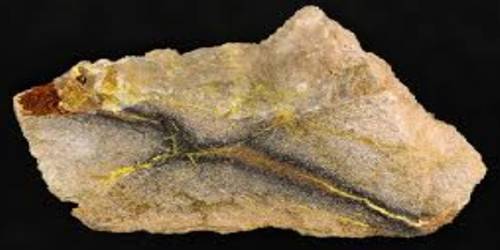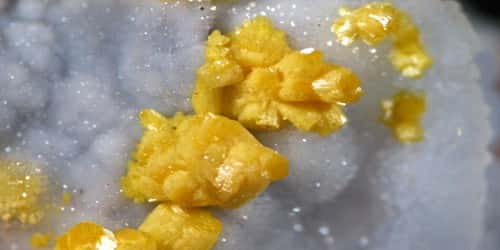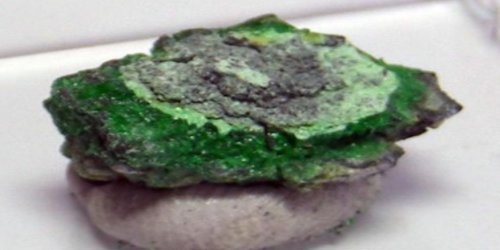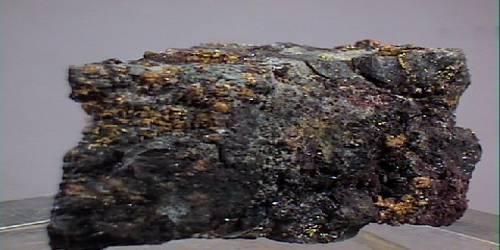Coffinite is a uranium-bearing silicate mineral with formula: U(SiO4)1-x(OH)4x. It is a uranium-bearing silicate mineral. It was first described in 1954 for an occurrence at the La Sal No. 2 Mine, Beaver Mesa, Mesa County, Colorado, US, and named for American geologist Reuben Clare Coffin (1886–1972).
General Information
- Category: Nesosilicate
- Formula: U(SiO4)1-x(OH)4x
- Crystal system: Tetragonal
- Crystal class: Ditetragonal dipyramidal (4/mmm)
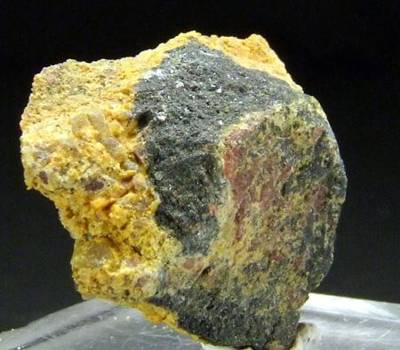
Properties
Initial examination of coffinite by Stieff et al. described the mineral as black in color with an adamantine luster, indistinguishable from uraninite (UO2). Initial samples showed a brittle texture and a hardness between 5 and 6, with a specific gravity of 5.1. It occurs as black incrustations, dark to pale-brown in thin section. It has a grayish-black streak. It has a brittle to conchoidal fracture. The hardness of coffinite is between 5 and 6.
- Color: Black (from organic inclusions; pale to dark brown in thin section
- Crystal habit: Rarely as crystals, commonly as colloform to botryoidal incrustations, fibrous, pulverulent masses
- Fracture: Irregular to subconchoidal
- Tenacity: Brittle to friable
- Mohs scale hardness: 5-6
- Luster: Dull to adamantine
- Streak: Grayish black
- Diaphaneity: Opaque, transparent on thin edges
- Specific gravity: 5.1
Geological occurrence
Coffinite was first discovered in sedimentary uranium deposits in the Colorado Plateau region but has also been discovered in sedimentary uranium deposits and hydrothermal veins in many other locations. Samples of coffinite from the Colorado Plateau were found with black fine-grained low-valence vanadium minerals, uraninite, and finely dispersed black organic material. Other materials associated with later finds from the same region were clay and quartz.
It has widespread global occurrence in Colorado Plateau-type uranium ore deposits of uranium and vanadium. It replaces organic matter in sandstone and in hydrothermal vein type deposits. It occurs in association with uraninite, thorite, pyrite, marcasite, roscoelite, clay minerals and amorphous organic matter.
Information Source:
